The Papers
Reference
About
Publishing Joseph Smith’s Revelations
In July 1831,
a Joseph
Smith revelation appointed
William W. Phelps to be church printer and Oliver Cowdery to assist him. They
were charged with, among other things, publishing Joseph Smith’s revelations. Before Phelps
and Cowdery began their work, a
few of the revelations were printed in newspapers not published by the church, but the church’s first official effort to publish
the revelations began with a
conference in Hiram,
Ohio, on 1 November 1831, where ten elders gathered to discuss publishing a
compilation of revelations called the
Book of
Commandments.
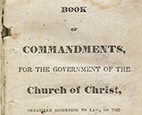
(Title page, Book of Commandments, 1833)
The
conference voted to publish ten thousand copies of the book, though this number
was later reduced to three thousand.
Revelation Book 1 served as the
major
source for the publication of the revelations in both the Book of
Commandments and the church newspaper, The Evening and the Morning
Star. Phelps
began printing the
Book of Commandments
in Missouri in 1833 but never
finished because the printing office in Independence was destroyed by
vigilantes in July of that year. During this same
period, the church published many revelations in
The
Evening and the Morning Star (later
edited and reprinted in Ohio as
Evening
and Morning Star). A comparison of the revelations printed in
each of these newspapers is found in
Revelations
Printed in The Evening and the Morning Star.
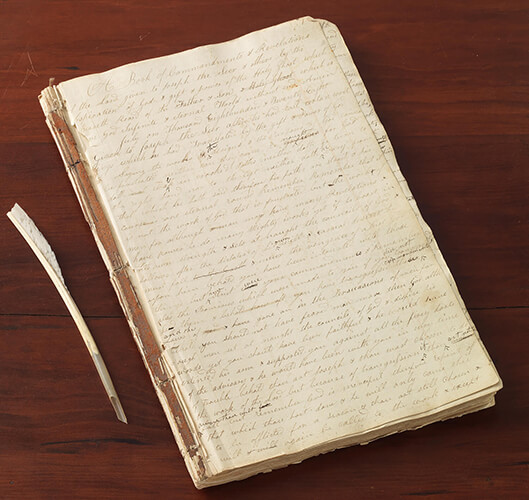
(Revelation Book 1, 1831–1835)
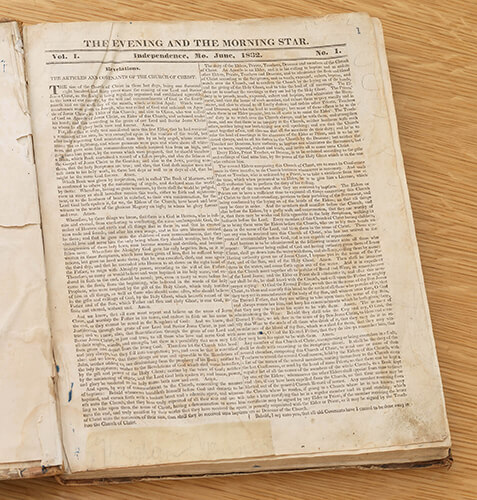
(The Evening and the Morning Star, vol. 1, no. 1, June 1832)
Shortly
after the destruction of the Independence printing office, church leaders
established a press in Kirtland, Ohio, and the
first edition of the
Doctrine and Covenants was published there in 1835. The 1835 Doctrine and
Covenants included all sixty-five of the revelations published in the Book of
Commandments, plus an additional thirty-eight sections and seven “Lectures on
Faith” that were given at the Elders School in Kirtland.
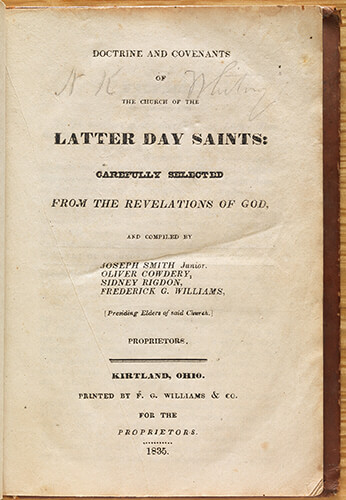
(Doctrine and Covenants, 1835 edition)
The
second edition of the
Doctrine and Covenants was printed in Nauvoo in 1844, shortly after
Joseph Smith’s death; it was
largely a reprint of the 1835 edition but included five
new revelations,
two Joseph Smith letters, and a tribute to Joseph and Hyrum Smith, written in
the aftermath of their deaths.
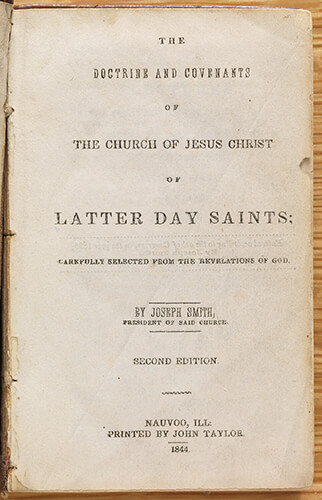
(Doctrine and Covenants, 1844 edition)
For further
introductory information, see Introduction
to Manuscript Revelation Books,
and Joseph
Smith–Era Publications of Revelations.
This finding aid does not include a list of all of
Joseph Smith’s published revelations, but such a list
can be found
here.
Documents relating to the
publication of the
Book of Commandments
(1833):
Documents
relating to the publication of the
Doctrine and Covenants
(1835):
JS, Journal,
18–19 April 1834
Oliver
Cowdery’s Copy of the Book of Commandments (used to set type for the 1835
Doctrine and Covenants)
Documents
relating to the publication of the
Doctrine and Covenants
(1844):
JS, Journal,
3
and
14
February 1843
JS, Journal, 5
December 1843 (not yet online)